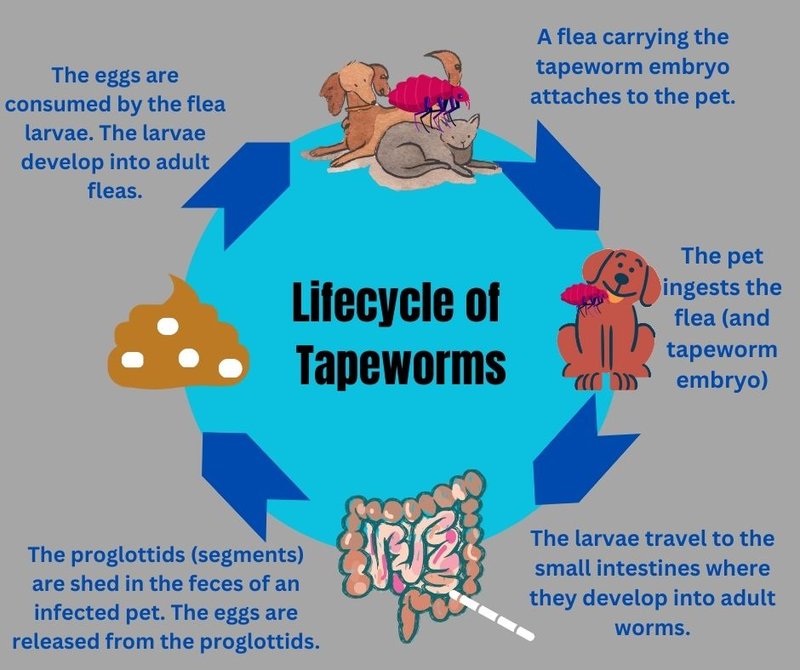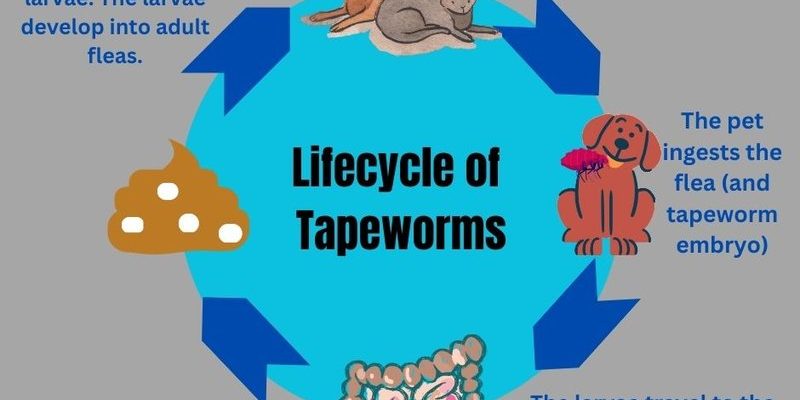
Imagine a tiny ecosystem at work, each part supporting the others like pieces in a well-oiled machine. Tapeworms, while often overlooked, are like those little gears inside that machine. They might not be the biggest or the flashiest, but their impact is significant. Today, let’s dig into the fascinating ecological importance of tapeworms and explore how they fit into the grand tapestry of life on Earth.
Understanding Tapeworms: More Than Just Parasites
First off, what exactly are tapeworms? These creatures belong to a class called Cestoda, and they mainly inhabit the intestines of vertebrates, including fish, birds, and mammals. They have a unique body structure, consisting of a flat, segmented form that allows them to absorb nutrients from their host. You might be wondering why such a creature is even relevant to our ecological discussions.
Tapeworms have evolved alongside their hosts for millions of years, creating intricate relationships in food webs. They can affect the health and behavior of their hosts, which can, in turn, influence the dynamics of the entire ecosystem. For example, by living in the gut of larger animals, they can play a role in nutrient cycling—an essential process that helps maintain the health of ecosystems.
The Role of Tapeworms in Ecosystem Balance
You might not think about it often, but every organism in an ecosystem plays a part, including tapeworms. These little guys can act as regulators of their host populations. For instance, when a host animal is heavily infested, it may experience poor health or reduced reproduction. This can limit the population size of that host species, creating balance amongst various animals in the habitat.
Moreover, tapeworms can be indicators of environmental health. If there’s an unusual surge in their numbers, it might signal problems within an ecosystem, such as pollution or changes in host availability. Scientists can study these patterns to understand better what’s happening in the environment and take action if necessary.
Trophics and Nutrient Cycling
Let’s dive deeper into how tapeworms assist in nutrient cycling. When tapeworms absorb nutrients, they don’t just keep it all to themselves. As they live and eventually die, they release those nutrients back into the environment. This process helps enrich the soil and water in their ecosystem, supporting the growth of plants and other organisms.
Healthy plant life means healthier animals, which in turn supports a more robust biodiversity. So, while a tapeworm may not be serving up a buffet for our eyes, its work behind the scenes feeds the entire ecosystem. It’s a fine example of how interconnected life can be, showing us that every little creature plays a role in the circle of life.
Tapeworms As Food Sources
Believe it or not, tapeworms also have their place in the food chain. Certain creatures, particularly some fish, birds, and even small mammals, rely on these parasites as a food source. When larger predators consume these animals, they absorb not just the nutrients from the hosts but also the energy and nutrients contained within the tapeworms themselves.
This relationship is a clear demonstration of the interconnectedness of life. By serving as a food source, tapeworms help sustain a variety of wildlife, contributing to biodiversity. Much like how a honeybee pollinates plants, tapeworms play an indirect role in supporting various species across complex ecosystems.
Medical and Scientific Research
In addition to their ecological roles, tapeworms have also sparked interest in the medical and scientific communities. Researchers are studying these organisms for insights into human health and disease. Understanding how tapeworms manage to thrive in their hosts can lead to breakthroughs in disease management, nutrition, and even digestion.
For example, some studies indicate that certain compounds found in tapeworms can influence the human immune system. While the idea of having a tapeworm inside you is unsettling, scientists are finding that these interactions might have uses in treating autoimmune diseases. Who knew that something generally viewed negatively could have potential medical benefits?
Conservation and Biodiversity
As we face increasing pressures from habitat loss and climate change, understanding every species’ contribution to ecosystems becomes more critical. Tapeworms, often seen as detrimental, actually support biodiversity and ecosystem stability. Their presence helps maintain healthy host populations, encourages nutrient cycling, and serves as food for various wildlife.
Conservation efforts must take all organisms into account, not just the more charismatic species like elephants or tigers. Every creature, big or small, plays a role in preserving ecosystem health, including our often-misunderstood tapeworm friends.
In wrapping up our exploration, it’s clear that tapeworms are much more than just parasites. They hold significant ecological value by maintaining balance, aiding in nutrient cycling, serving as food sources for other creatures, and even offering insights into medical research. Understanding their role helps us appreciate the intricate web of life that exists all around us.
So, the next time you think about tapeworms, consider their importance in nature. They might seem small and insignificant, but as we’ve seen today, they play a vital role in the tapestry of life. Every organism contributes to the ecosystem in its way. In a world that often overlooks the small and the creepy, it’s high time we give tapeworms their due credit.

